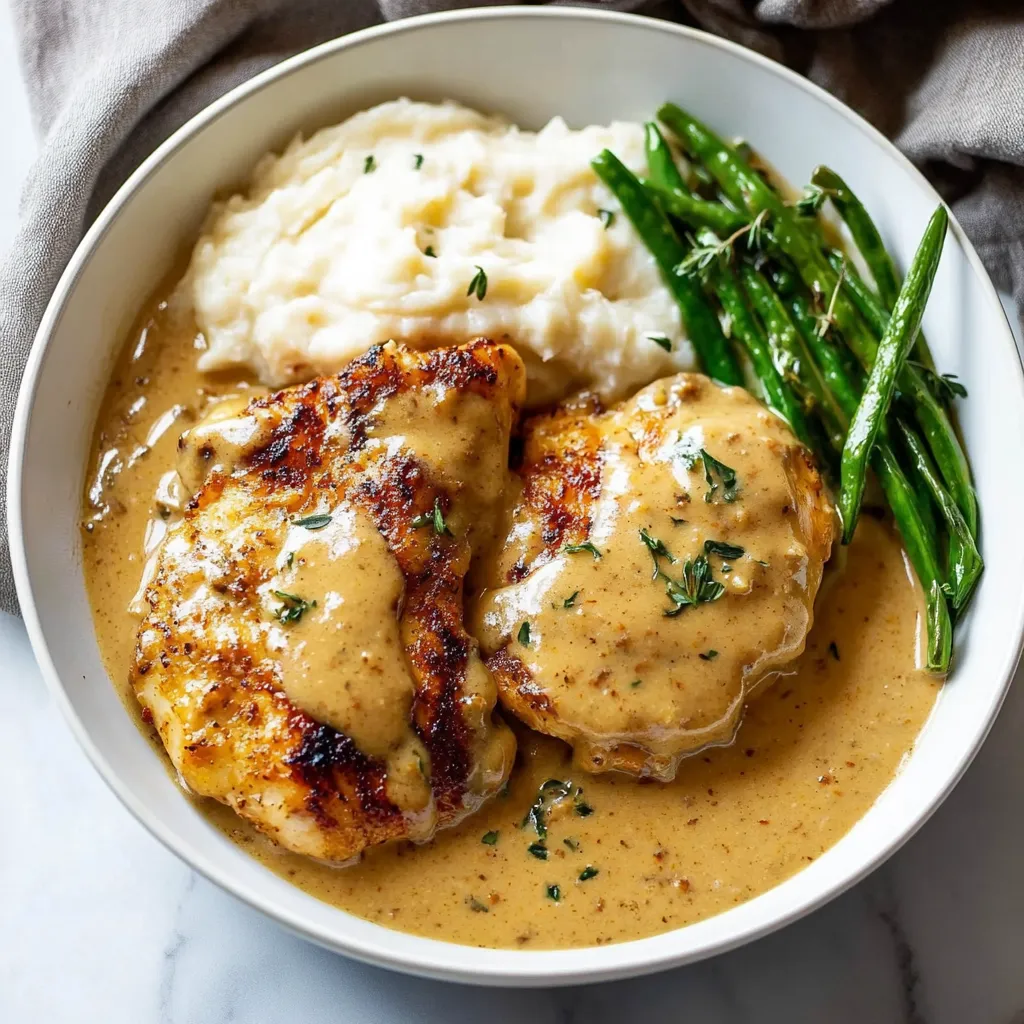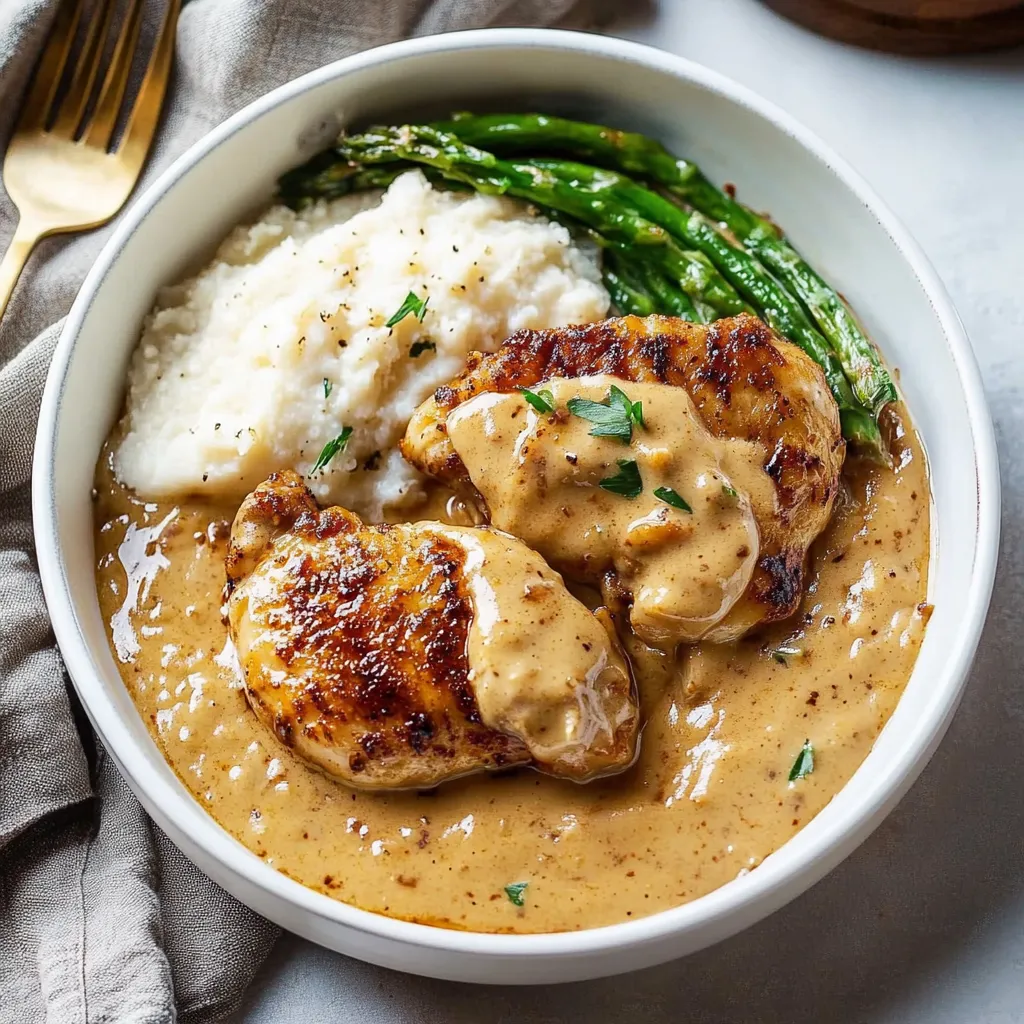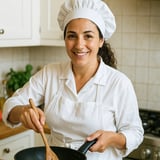 Save
Save
This creamy garlic chicken has become my family's ultimate comfort food dinner, combining tender chicken breasts with a velvety, garlic-infused sauce that's impressive enough for guests yet simple enough for weeknights.
I first made this dish when trying to recreate a fancy restaurant meal we had on our anniversary. The whole family was silent during dinner except for the occasional "wow" between bites, and now it's our special occasion go-to meal.
Ingredients
- Boneless skinless chicken breasts large breasts sliced horizontally create the perfect thickness for even cooking and maximum tenderness
- Italian seasoning this blend provides balanced herbs without having to measure multiple spices
- Parmesan cheese adds nutty depth to both the chicken coating and sauce while helping thicken the final consistency
- Chicken broth forms the base of our sauce with deep savory notes
- Beef bouillon the secret ingredient that gives incredible umami depth to an otherwise simple sauce
- Soy sauce enhances all other flavors with its natural glutamates
- Whole garlic cloves cooking them whole until caramelized creates sweet mellow garlic flavor rather than sharp bite
- Heavy cream creates the silky texture that makes this dish irresistible
- Butter provides richness and helps develop flavor when deglazing the pan
Step-by-Step Instructions
- Prepare the chicken
- Slice each large chicken breast horizontally into 2-3 thinner pieces. This crucial step ensures quick cooking and tender results. Place between plastic wrap and gently pound to an even half-inch thickness. Pat completely dry with paper towels to ensure proper browning. Season both sides generously with Italian seasonings and salt/pepper before dredging in the Parmesan-flour mixture.
- Create the perfect sear
- Heat olive oil until shimmering in a large skillet over medium-high heat. Place chicken carefully into the hot oil without overcrowding to ensure proper browning. Cook undisturbed for 4-5 minutes until deeply golden before flipping. After flipping, avoid moving the chicken until the second side develops a beautiful crust. Transfer to a plate where it will release juices that will later enhance our sauce.
- Develop flavor base
- Reduce heat to medium-low and add butter to the same skillet. Use a silicone spatula to scrape up all the browned bits from the chicken these contain concentrated flavor. Add whole garlic cloves and cook slowly for a full 6-7 minutes until they soften and turn golden brown. This caramelization transforms the garlic from sharp to sweet.
- Create the sauce
- Sprinkle flour over the garlic and butter mixture and cook for 1-2 minutes while stirring constantly this eliminates any raw flour taste. Gradually add the broth mixture in small splashes while continuously stirring to prevent lumps from forming. Allow each addition to incorporate before adding more. Once all liquid is added bring to a gentle boil then reduce heat.
- Finish and serve
- Stir in cream and let it heat through before gradually incorporating Parmesan cheese in small handfuls to prevent clumping. Return chicken and any accumulated juices to the pan, spooning sauce over each piece. Partially cover and simmer gently for 5 minutes until chicken is cooked through and sauce has thickened slightly. Serve immediately with your favorite sides.

The whole garlic cloves are truly the heart of this recipe. The first time I served this, my husband who normally picks around garlic cloves was spreading them on bread like butter. That's when I knew this recipe was special the long, gentle cooking transforms them completely from their raw state into something almost confectionery.
Mastering the Chicken Thickness
Getting the chicken thickness right makes all the difference between tough, dry chicken and perfectly juicy results. By slicing horizontally and gently pounding, you create pieces that cook quickly and evenly while remaining tender. This technique also increases the surface area for the delicious coating. If your chicken breasts are particularly large, you might get three cutlets from each one aim for consistency in thickness rather than specific number of pieces.
Sauce Troubleshooting
The perfect sauce should coat the back of a spoon with a silky, flowing consistency. If your sauce seems too thin after adding the chicken back in, you can remove the chicken temporarily and increase the heat to medium, allowing the sauce to reduce for 2-3 minutes while stirring frequently. Conversely, if the sauce becomes too thick, add additional chicken broth a tablespoon at a time. Remember that the sauce will continue to thicken slightly as it cools, so it's better to err on the side of a slightly thinner consistency while still hot.
Serving Suggestions
This creamy chicken shines when paired with sides that can soak up the incredible sauce. Fluffy mashed potatoes make an ideal base, but buttered egg noodles or steamed rice work beautifully too. For vegetables, roasted green beans or asparagus provide a perfect contrast to the rich sauce. For a complete presentation, serve family style on a large platter with the chicken nestled on the starch of choice, vegetables alongside, and plenty of sauce drizzled over everything. Sprinkle with fresh parsley for a pop of color and freshness.
Recipe FAQs
- → Can I use chicken thighs instead of breasts?
Yes, boneless skinless chicken thighs work beautifully in this dish. They may require slightly less pounding to flatten and will typically stay more tender and juicy. Adjust cooking time as needed - thighs may cook a bit faster.
- → How can I make this dish dairy-free?
To make a dairy-free version, substitute the butter with olive oil or dairy-free butter, replace heavy cream with full-fat coconut milk or cashew cream, and omit the Parmesan cheese. You may want to add nutritional yeast for a similar umami flavor.
- → What can I substitute for heavy cream?
If you don't have heavy cream, you can use half-and-half, though the sauce won't be as rich. For a lighter option, try evaporated milk. In a pinch, whole milk mixed with 1-2 tablespoons of melted butter can approximate the richness of cream.
- → Can I make this ahead of time?
Yes! This dish reheats wonderfully. Prepare completely, cool, and refrigerate for up to 3 days. Reheat gently on the stovetop or in a 325°F oven covered with foil until heated through. You may need to add a splash of broth if the sauce has thickened too much.
- → What sides pair well with creamy garlic chicken?
Beyond the suggested mashed potatoes and green beans, this dish pairs beautifully with pasta, rice, or crusty bread to soak up the sauce. Roasted asparagus, sautéed spinach, or a simple side salad would also complement the rich, creamy flavors.
- → How do I know when the chicken is done cooking?
The chicken is done when it reaches an internal temperature of 165°F (74°C) at the thickest part. If you don't have a thermometer, cut into the thickest part - the meat should be white throughout with no pink, and juices should run clear.
